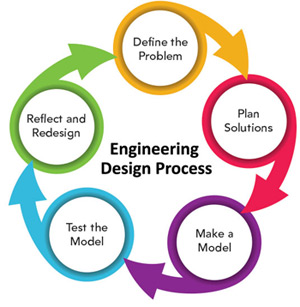Plan Now to Assess STEM Learning This Fall
A MiddleWeb Blog

If you’ve tried searching the Web for information on STEM assessment, chances are you’re still searching. It’s hard to find. You may have come across articles on needs assessment – or ideas for assessing a district-wide or school-wide STEM program. But bringing it right into your own learning space: how will you and your students weigh their learning and progress?
Some classroom assessment ideas
I’ve been thinking about this question as I work on my book for Routledge/Eye on Education (you’ll recognize the title if you follow this blog!) Let me share some of my current thoughts and ideas to consider as you get ready to implement or improve your STEM curriculum this fall.
I’m going to focus on formative assessment – the kind of day-to-day “checks for learning” that you and your students can use to monitor their performance and improve their understanding. Assuming that your STEM curriculum is seeking to help students apply science, math and technology using engineering principles (my definition of STEM), here are some areas from which you might collect information:
Success in meeting lesson criteria

- Catch clots and hold them
- Stay in place in the vein throughout the testing
- Stay together in one piece
- Allow blood to keep flowing through the vein
Students assessed their success by the degree to which the devices they designed did this. They used the resulting data to redesign the clot catchers so that they were even more successful.
You can also use this data to determine which teams might need more guidance, but avoid using this information to “grade” them. Remember that failure to meet criteria is normal in many STEM projects and provides a good learning experience.
Engineers regularly redesign their original solutions because the solutions don’t perform as well as needed/anticipated. One thing you could assess is the degree to which students persist in coming up with a better solution, and whether the performance of the second device shows improvement.
To do: This summer go through the STEM lessons you plan to teach and make note of the criteria teams will be meeting. If appropriate, design a rubric or rating scale so that teams can self-assess their progress.
Success at working in teams
One of the best ways to keep good teamwork behaviors on students’ radar is to ask them to do a brief team assessment before the class begins. This would require students to assess their previous teamwork (individually or as teams) and would bring desired behaviors to mind. Here’s a tool I’ve used (download Word file):
Or, you could give students a brief end-of-class assessment and let them rate their behaviors during the current class. The assessment can be as simple as a couple of open-ended questions: What did our team do well today? What do we need to improve? Or, it could be a checklist that summarizes desired team behaviors and allows team members to rate their team.
During STEM class, be on the lookout for students exhibiting behaviors of successful team members. Also notice behaviors they marked as needing improvement. As students are engaged in the lesson/activity, put some sort of “heads up” signal on tables (perhaps a green, yellow, or red circle) to indicate how you think they’re doing with their teamwork.
To do: Before school begins, locate or develop one or more teamwork rubrics or rating scales. Decide what signal you will use to let each team know how they are doing with their teamwork and prepare or purchase these signals.
Success in understanding content

Use these questions to get an idea where you might need to shore up their understanding.
To do: Think through your STEM lessons and prepare some possible questions you can ask to determine whether students understand the content they are applying.
Success in using the engineering design process (EDP)
Your students don’t need to be able to recite from memory the steps of the engineering design process, but they should be familiar with the way engineers think about problem-solving.
Throughout the lesson you might ask questions such as After your team brainstorms some possible solutions for our problem, what would your next step be? (Students would probably choose what the team considers the best solution and create a prototype. However, in some cases they might do more research before doing the construction. The EDP is iterative.)
To do: Examine the EDP you will use and come up with some questions that can lead students to make connections between their work and how engineers solve problems. While not all EDPs are identical (an Internet search will bring up many different versions), all use the same basic procedure. And all EDPs contain a step in which students create or construct a model or prototype of their solution.
Other assessment data you could gather
That’s just a taste of the kinds of formative feedback you can gather on student progress. You might also consider gathering data on these:
- Student reactions to STEM classes. Do they feel “safe” in expressing out-of-the-box ideas like the hands-on approach? Take ownership of their own learning? See value in working together with others? etc.
- Indications that students are transferring STEM practices to other areas of study. Students should begin applying engineering design thinking to other problems. They should transfer good teamwork practices to other situations. They may be more innovative and creative in ideas they suggest and become increasingly curious and inquisitive.
Not summative, but important
What I’ve shared here are not the formal summative evaluations we normally think of when we hear about testing students; however, these are important assessments. They can give you the timely information you need to keep your STEM lessons on track and be sure students are learning, growing, and becoming more proficient at solving problems they will face as adult workers.

































